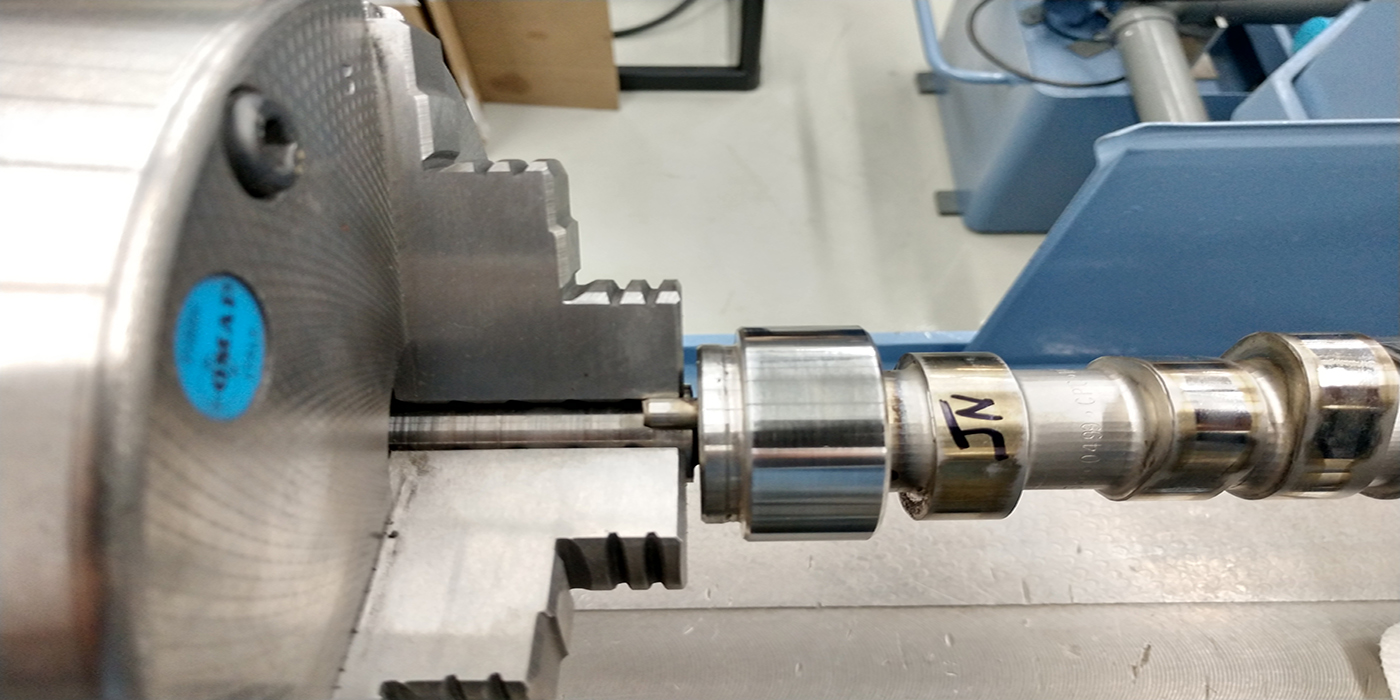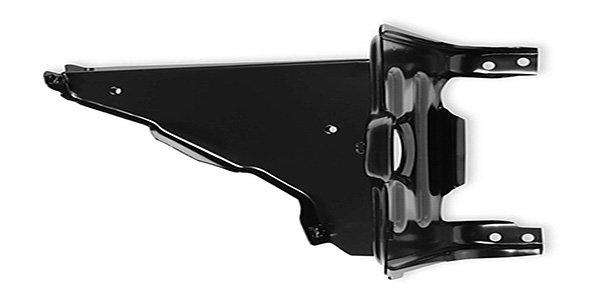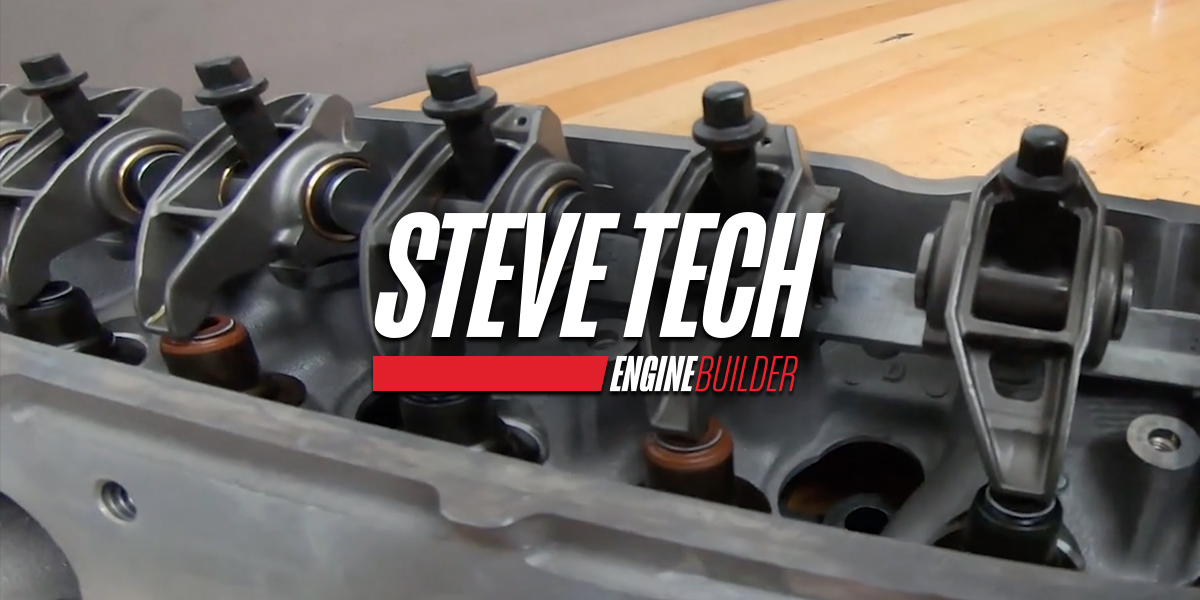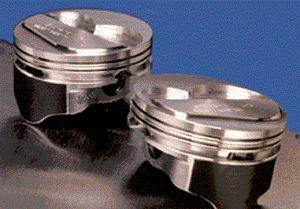 Burned pistons. Scuffed pistons. Cracked pistons. These are problems no customer wants to experience in an engine you’ve built. Warranty claims can kill your business, so here are some tips on how to prevent these and other common piston problems.
Burned pistons. Scuffed pistons. Cracked pistons. These are problems no customer wants to experience in an engine you’ve built. Warranty claims can kill your business, so here are some tips on how to prevent these and other common piston problems.
First and foremost, if you’re custom building an engine that has already suffered some kind of piston failure, it should tell you there’s an underlying problem that needs to be diagnosed and corrected; otherwise the replacement engine may suffer the same fate.
Piston problems you’re likely to encounter include:
Detonation Damage
When combustion temperatures and pressures exceed the octane rating of the gasoline that’s being used in an engine, it causes the fuel to ignite spontaneously. The result is multiple flame fronts that collide in the combustion chamber and produce high pressure shock waves that hammer the pistons. The classic symptom of detonation or spark knock is a pinging or knocking noise that is heard when the engine is under load. Over time, detonation can be very damaging to the pistons as well as the rings, head gasket and rod bearings. Detonation damage typically includes cracked or broken ring lands and cracks in the piston itself.
Replacing the damaged pistons will temporarily solve the engine’s mechanical problems. But the new pistons will likely be hammered to death, too, unless the conditions that are allowing detonation to occur are diagnosed and corrected.
Possible causes include over-advanced spark timing, an inoperative EGR valve or plugged EGR port, engine cooling problems, too much compression (carbon build-up, milled heads, wrong heads, high compression pistons) and low octane fuel.
Preignition Damage
A burned piston is a piston that has been subjected to excessively high combustion temperatures. Damage may include a hole burned through the top of the piston or the upper piston land. This type of damage is typically caused by a hot spot in the combustion chamber that becomes a source of premature ignition.
The cause may be spark plugs with too hot a heat range, an extremely lean air/fuel mixture, a hot exhaust valve or even a sharp edge in the combustion chamber. Reading the spark plugs should tell you something about the air/fuel mixture and the heat range of the plugs. If the electrodes are melted or damaged, the plugs are too hot.
Piston Scuffing
This is a sure sign of overheating and/or insufficient clearance. When an engine runs hot, the pistons swell up reducing the clearance between the piston and cylinder. The cylinder bore can also distort from localized hot spots, further adding to the problem. If a piston gets hot enough, it will scuff the wall wiping material off the sides of the piston. Where this occurs will give you a clue as to the cause.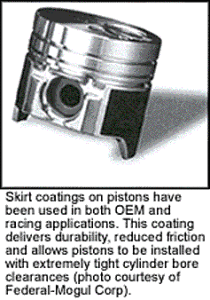
If overheating is involved, the scuffing will be primarily on the upper ring lands and on the sides near the wrist pins. There may also be oil carbon and lacquer burned onto the underside of the piston indicating it was unusually hot.
The presence of scuff marks on the lower skirt area would tend to indicate a lubrication problem rather than an overheating problem. Scuff marks on the edges or corners of the thrust sides of the piston would indicate bore distortion as the culprit. Scuffing on both thrust sides would indicate binding in the wrist pin.
Any time you find evidence of scuffing, therefore, it’s important to diagnose and correct the underlying cause to prevent a repeat failure.
If the engine was recently rebuilt, the scuffing problem may be due to insufficient assembly clearances. The only way to know is to measure the pistons and cylinders. Measure the pistons at the top, center and bottom of the skirt area in two directions (parallel to the wrist pin and perpendicular to the wrist pin) to see if the pistons are within the manufacturer’s specifications.
If the pistons are the correct size, then measure the cylinder bore at the top, middle and bottom, also in two directions (parallel to the crankshaft and perpendicular to the crankshaft). This will tell you how much taper is in the bores, and if bore distortion is a problem. By subtracting the piston dimensions from the bore dimensions, you can figure the piston-to-cylinder clearance. If the clearance is within specifications, the underlying problem is overheating.
Many aftermarket replacement pistons today are available with moly coated skirts to protect new pistons against scuffing. The coating also allows you to run slightly tighter clearances to reduce piston noise when the engine is cold, and blow-by. Upgrading to coated pistons is probably a good idea for any engine that has a history of scuffing or may be prone to detonation or overheating. Think of it as insurance against piston problems.
Ring Land Pound Out
his can occur in high output, turbocharged and supercharged engines that operate under higher temperatures and loads than other engines. If the piston alloy can’t stand up to the rigors of the application, the piston can soften and lose strength at high temperatures allowing the top ring land to pound out. For these types of applications, stronger hypereutectic pistons are often required – so don’t substitute ordinary cast pistons or you’ll have problems.
Piston Slap
Piston rattle or slap when an engine is cold indicates too much clearance between pistons and cylinders. This may be due to excessive assembly tolerances or worn cylinders. Some forged pistons have a higher rate of thermal expansion than cast pistons, and may require slightly greater cold clearances to compensate. This, in turn, may produce some unwanted piston noise when a cold engine is first started, but it has no effect on piston performance, durability or longevity.
Shattered Piston
A catastrophic piston failure usually means the piston hit something hard during its travels that caused it to shatter. The engine may have sucked a valve or over-revved, allowing the piston to smack an open valve. Underlying causes of a valve failure may include lack of concentricity between valve seat and guide (caused head to flex and eventually snap off), valve sticking (engine overheating or insufficient valve stem to guide clearance), valve stem breakage (due to incorrect valvetrain or rocker arm geometry), valve retainer or keeper failure or valve spring breakage.
If the valves are intact, the underlying problem may have been insufficient clearance between the valves and pistons. Things to look for here include valve lift (too much lift with a performance cam or high light rocker arms), valve timing (broken or slipped timing chain or belt, misaligned timing marks, etc.), the depth of the valve reliefs in the pistons and installed piston height.
Cast pistons are much more brittle than forged pistons. A ductile forging can often survive a close encounter with a valve without shattering, which is why forged pistons are a good choice for high performance engines.
Wrist Pin Damage
Sometimes a wrist pin will work loose and wear a groove into the cylinder with each stroke of the piston. The underlying cause here may have been improper installation of the retaining lock rings on a full floating wrist pin, or improper fit or installation of a pressed-in wrist pin, a twisted or bent connecting rod, excessive thrust end play in the crankshaft or taper wear and/or misalignment in the crankshaft rod journal.
Piston Replacement
Pistons should almost never be reused. Many pistons that appear to be in good condition and show no signs of scuffing or damage often have worn upper ring lands which can cause ring problems if reused, so be sure to measure carefully. Also, check the fit of the wrist pin carefully as looseness here can cause problems and noise.
Pistons also have to be replaced if the cylinders are worn and require boring and honing to oversize.
Other reasons to replace the pistons would be to change the stock compression ratio or to increase the durability of the engine if it is being modified for more power.
Replacement pistons generally come in one of three types:
• Conventional cast aluminum pistons, which are used as original equipment in most passenger car and light truck applications;
• Hypereutectic alloy cast pistons which are used in many higher output engine applications; and
• Forged aluminum pistons which are used in the most demanding applications. This includes racing, diesel engines and certain high performance, turbocharged and supercharged applications.
The general rule when rebuilding an engine is to always replace same with same or better components.
Many late model engines today are factory-equipped with hypereutectic pistons. You’ll find them in Ford’s 3.0L V6, Ford’s 4.6L V8 and the 1.9L Escort engine, the General Motors 2.3L Quad 4 and the 2.5L “Tech 4” (formerly known as the “Iron Duke”). You’ll also find them in many late model Japanese engines.
The difference between hypereutectic pistons and conventional cast pistons is the amount of silicon in the aluminum. “Hypereutectic” refers to the concentration of silicon in the alloy. When silicon is added to molten aluminum, the “eutectic” point is reached when silicon starts to solidify and form hard little particles dispersed throughout the metal matrix as the molten metal cools. This point occurs at 12 percent silicon content. Alloys with less than 12 percent silicon are therefore called “hypoeutectic” (which includes the ductile alloys used to make forged pistons) while those with more than 12 percent silicon content are called “hypereutectic.” Conventional cast pistons typically contain 8 to 11 percent silicon while most hypereutectic pistons contain 16 to 20 percent silicon.
Silicon adds hardness to the alloy, which increases wear resistance, durability and high temperature fatigue strength. This eliminates ring pound out, scuffing, and allows the top ring groove to be located closer to the top of the piston to reduce emissions.
Most hypereutectic pistons also undergo less thermal expansion than conventional cast pistons which means they can be installed with somewhat tighter tolerances than conventional pistons to improve cold sealing and reduce blow-by. Closer tolerances also allow quieter operation because piston rattle is reduced.
If you’re replacing the pistons in an engine that was originally equipped with hypereutectics, follow the manufacturer’s recommendations for clearances. But if you’re replacing conventional cast pistons in an older engine with hypereutectic pistons, piston-to-cylinder wall clearances can often be decreased by .0005˝ over the stock specifications.
For high performance, severe service or heavy-duty applications, replacing stock cast pistons with hypereutectic or forged pistons would be recommended. Forged would be the preferred choice for any application involving nitrous oxide or extensive modifications.
Forged pistons may contain from almost no silicon up to 11.5 percent depending on the alloy and application. The important difference here is the way the pistons are made: they’re forged under high pressure rather than cast into shape. The forging process increases the density of the metal, which significantly improves its strength (up to 40 percent or more over conventional cast pistons), resistance to cracking and thermal characteristics. Forged pistons can often survive a close encounter with a valve without shattering, and generally run 18 to 20 percent cooler than cast pistons because they transfer heat more efficiently. That, in turn, provides added protection against detonation and preignition.
Some people think that the same thermal characteristics that allow forged pistons to run cooler also causes them to swell more as they heat up. Consequently, there’s a common misconception that forged pistons always require greater skirt-to-wall clearances. This is a notion that isn’t necessarily true because clearances depend on the type of alloy that’s used in a forged piston, the design of the piston itself and the application in which the piston will be used. Some forged alloys actually have a lower coefficient of thermal expansion than the alloys commonly used in conventional cast pistons!
One way to control thermal expansion in a piston is to manufacture it so the piston is slightly elliptic rather than round. The diameter of most pistons (forged as well as cast) measures anywhere from .010˝ to .035˝ shorter across the wrist pin axis than the diameter perpendicular to the pin (the “major” axis). This compensates for the greater mass in the wrist pin area, which causes the piston to swell sideways as it heats up. This allows the piston to fill the hole as it heats up for a tighter all-round seal.
Piston growth is also influenced by the temperature differential between the top and bottom of the piston. The top can be 300 degrees F or more hotter than the bottom. Since the top runs hotter and swells more than the bottom, growth can be controlled by making the skirt profile taper in towards the top. The typical piston is widest at the bottom of the skirt and narrowest at the top (which is why it’s so important to always measure a piston at the location specified by the piston manufacturer, which may be either perpendicular to the pin at the pin centerline, one inch up from the bottom of the skirt or at the top of the skirt).
When all these factors are taken into consideration, there can be considerable differences in recommended minimum skirt clearances between various brands of forged pistons. In some applications (such as a low compression, moderate horsepower output engine), a forged piston may be installed with the same clearances as an OE cast piston. In other applications (high compression, high power output), the pistons may need additional clearance.
Piston Installation
If the engine’s cylinders show excessive taper wear or are scored or out-of-round, the block will have to be bored to accept oversized pistons. The sizing and finishing of the bores is critical to achieve the proper clearances when the new pistons are installed.
One of the effects of boring a cylinder to oversize is an increase in compression. More compression increases power and torque, but also increases the risk of detonation and preignition. Ideally, you should try to keep the compression ratio as close to stock as possible on late model emission controlled engines, which means you may have to install pistons that are “compression compensated” (reduced compression height, destroked wrist pin position or enlarged head recess). Other options include milling the tops of the pistons, installing thicker head gaskets or a head gasket shim to reduce compression.
Before the new pistons are installed in the block, it’s always a good idea to check bore clearances whether the block as been machined or not. Using an accurately calibrated micrometer, measure the “major” axis (perpendicular to the wrist pin) at the position on the skirt specified by the piston manufacturer. To this dimension, add the wall clearance recommended by the manufacturer – then compare to the actual bore size.
Another method to check the piston-to-cylinder clearance is to insert the piston into the bore and check the skirt clearance with a feeler gauge. The end gaps of the rings should also be checked by placing a top compression ring in the cylinder and measuring the gap.
If the clearances are correct, you’re almost ready to put the engine back together. But, first make sure the bores are clean. Hot soapy water and a stiff plastic brush work best because cleaning solvents typically leave a lot of honing debris in the bores.
After cleaning, lightly lubricate the cylinders, pistons and rings with oil prior to installation. If the pistons have full-floating wrist pins, the lock rings should be positioned with the open gap at the bottom. Squeeze the ring only enough to insert it into place, and make sure the ring is properly seated in its groove. With pistons that have press-in pins, the small ends of the connecting rods should be heated before the pins are pressed into place. This will reduce the amount of hydraulic force needed to press the pins into place and reduce the risk of galling or damaging the pins or connecting rods.
Use a ring compressor to install the pistons, and make sure the pistons are installed with the correct orientation (the side of the piston marked front and/or up is properly positioned). If you’re reusing the original pistons, they should go back into the same cylinders as before.
As a final check, rotate the crankshaft to check for normal resistance (the last thing you want is a tight piston). Also, measure installed piston height (piston protrusion). On newer OBD II engines, some engine builders have found that if the protrusion height varies more than .008˝ to .010˝ from one cylinder to another, it may be enough to set a random misfire (P0300) code.

